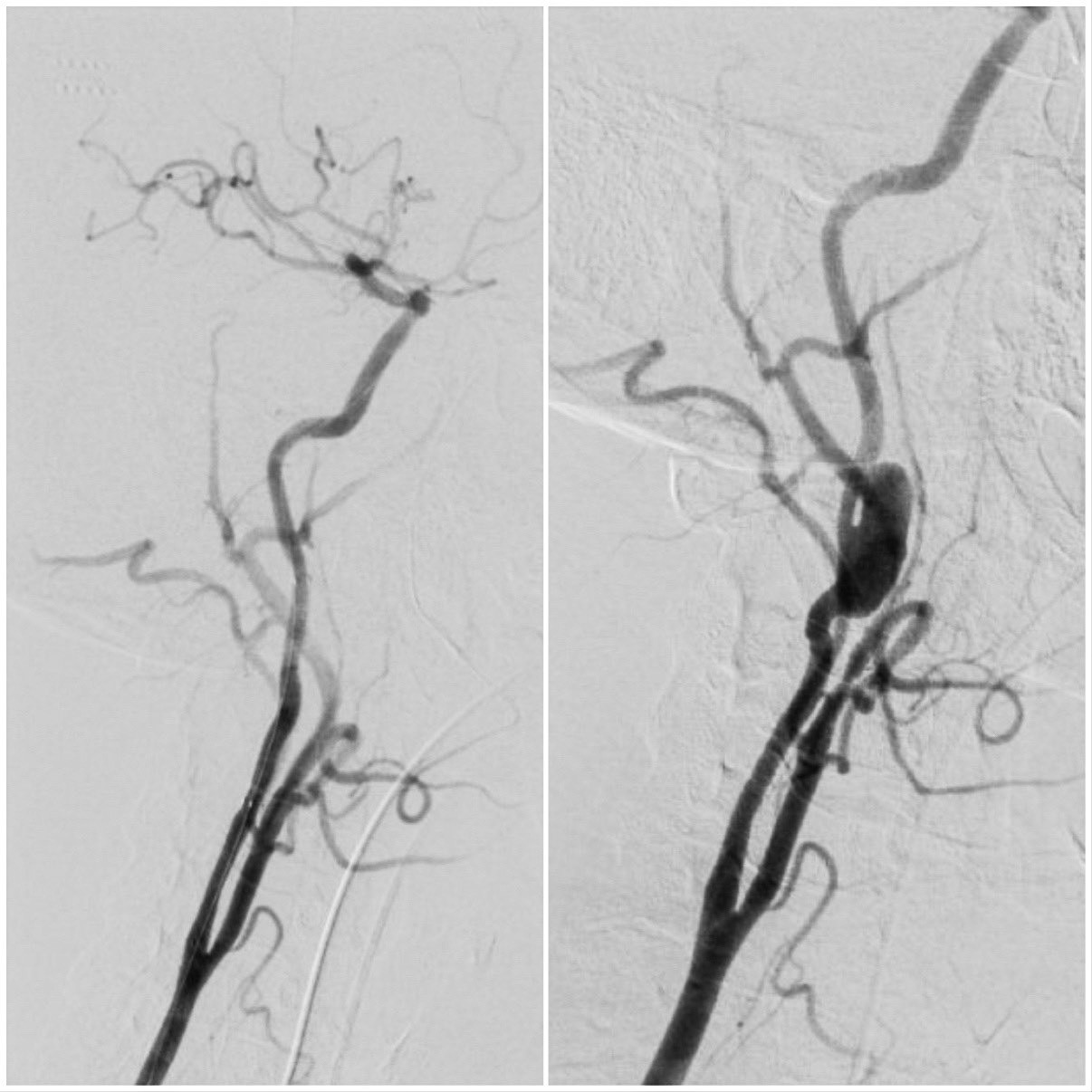Transcarotid Endovascular Repair Of Extracranial Internal Carotid Artery Aneurysms Using Flow Reversal For Distal Embolic Protection
Syed M. Ahmed, MD, Motahar Hosseini, MD, Rafael Santini, MD, Sunny Sahajwani, MD, Raghuveer Vallabhaneni, MD, Shahab Toursavadkohi, MD, John Karwowski, MD, Khanjan Nagarsheth, MD.
University of Maryland, Baltimore, MD, USA.
OBJECTIVES: Extracranial carotid artery aneurysms (ECAA) are very rare and have a reported 30-day mortality and stroke rate of 4.67% and 6.67%, respectively. Repair of ECAA is recommended but open repair carries a reported mortality and stroke rate that ranges from 9% to 25%. Herein, we present a series of three patients who had endovascular repair of their ECAA via a transcarotid artery revascularization (TCAR) procedure.
METHODS: Retrospective chart review and review of the literature
RESULTS: Three cases were identified who had endovascular repair of their ECAA with transcarotid artery access and flow reversal. The mean age was 68.3 +/- 13.3 years and all patients were male. One patient presented with hoarseness and had a prior endovascular repair at an outside facility and was referred for expansion of his aneurysm sac. Two patients were identified incidentally for workup of dysphagia and dizziness. All patients were found to have ECAA that were distal on the internal carotid artery and too high to permit effective open repair. After open access of the ipsilateral common carotid artery, flow reversal was achieved via the common femoral vein. All the arteries were repaired with either self-expanding covered stents with or without balloon expandable covered stent placement. Completion carotid angiogram in all patients revealed complete exclusion of the aneurysm and no evidence of endoleak. No patients had any neurologic or cardiac events following the procedure. One patient required reoperation for hematoma evacuation. At midterm follow-up, all patients are doing well with no further neurologic sequelae. All patients are being maintained on dual antiplatelet agents at this time.
CONCLUSIONS: The use of a transcarotid approach with flow reversal for distal embolic protection, to repair ECAA is technically feasible and safe from the perspective of perioperative stroke and mortality. All patients in this series had successful exclusion of the aneurysm and are doing well at midterm follow-up. Comparative, multi-institutional studies with long term follow-up should be performed to evaluate outcomes of TCAR compared to a transfemoral approach and open repair of extracranial carotid artery aneurysms. 
Back to 2020 ePosters
